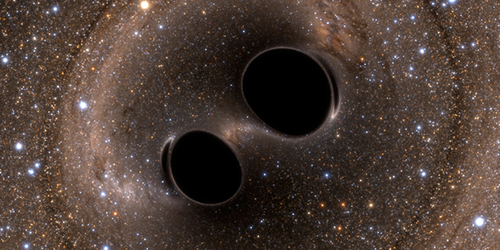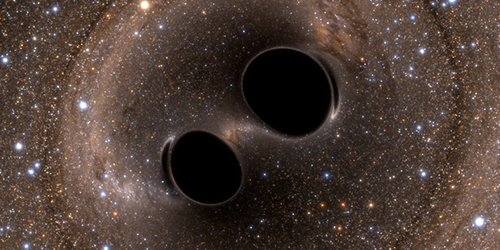Gravitational Waves May Hold Dark Matter Secret
This past summer, the LIGO detectors observed the gravitational-wave signature of two 30-solar-mass black holes spiraling into each other. Such black holes could be abundant in the Universe, so abundant that they could be the missing dark matter. Simeon Bird and colleagues from Johns Hopkins University, Maryland, have explored this possibility by estimating the merger rate of 30-solar-mass black holes playing the role of dark matter. The results are consistent with the rate inferred from LIGO’s observations, but more data will be needed to convincingly connect black holes and dark matter.
Dark matter is often considered to consist of microscopic particles, but certain theories of the early Universe predict the formation of black holes that could serve as dark matter constituents. The size of these primordial black holes (PBHs) is severely limited by gravitational lensing surveys that fail to observe these foreground objects, but there is a window for dark matter PBHs in the range from 20 to 100 solar masses.
Bird and colleagues imagined that the Universe is filled with 30-solar-mass PBHs at a density consistent with dark matter models. Making assumptions about the concentration and velocity of dark matter inside galaxies, they then calculated how often these PBHs fly close enough to each other to merge. The predicted merger rate agreed with the estimate by LIGO researchers that mergers of 30-solar-mass black holes should occur 2 to 53 times per year in a gigaparsec-cubed volume—the equivalent of about a billion Milky Way galaxies. However, there are large uncertainties in dark matter models, so more merger observations will be needed to find specific dark matter signals, such as a high fraction of events in small galaxies.
This research is published in Physical Review Letters.
–Michael Schirber
Michael Schirber is a Corresponding Editor for Physics based in Lyon, France.





